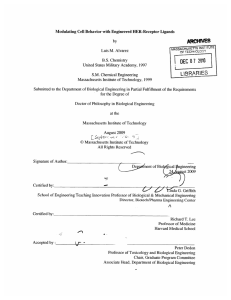Cell Communication
advertisement
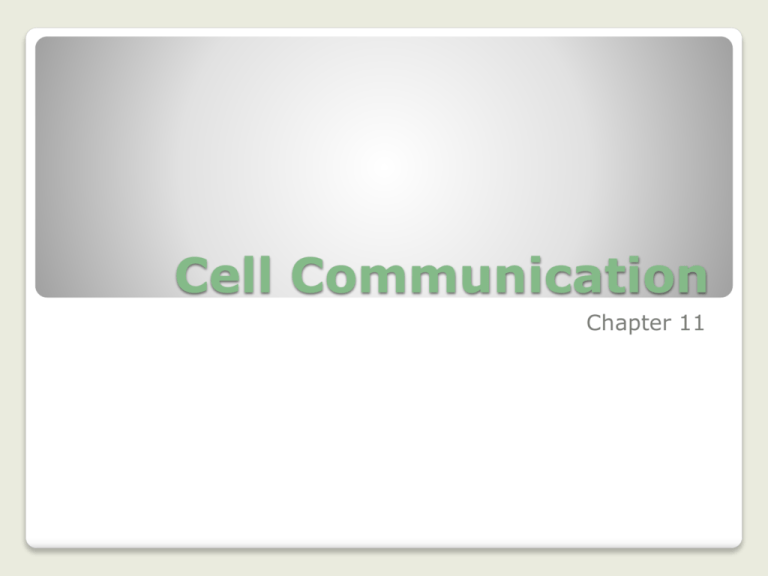
Cell Communication Chapter 11 11.1 External signals are converted to responses within a cell Cells must “talk” to coordinate activities Evolved in single and multicellular organisms ◦ Ex: quorum sensing in bacteria ◦ Ex: hormones in plants and animals Why cell communication? Cell to cell contact Local ◦ Paracrine ◦ Synaptic Long distance ◦ Endocrine Signaling by Distance Receiving end of cell “conversation” Signal Transduction Pathways 11.2 Reception: A signaling molecule binds to a receptor protein, causing it to change shape Chemical signal is detected by the target cell Surface proteins or intracellular receptor Ligand ◦ Signaling molecule that binds specifically to another molecule Reception Ligand binds to G protein-coupled receptor on membrane G protein becomes activated Activated G protein binds to enzyme, activating it G protein receptor is COUPLED with G protein Reception: G Protein-Coupled Receptor Ligand binds to receptor tyrosine kinase protein monomers ◦ Kinase: enzyme that transfers phosphate groups Activated monomers form dimer Phosphates from ATP added to activated dimer Reception: Receptor Tyrosine Kinases Ligand gated ion channel changes shape when ligand binds Opens “gate” so ions can cross membrane Reception: Ion Channel Receptors Receptor in cytoplasm or nucleus (NOT cell membrane) Signal is hydrophobic or small enough to cross membrane ◦ Ex: steroid hormones, nitric oxide Reception: Intracellular Receptors 11.3 Transduction: Cascades of molecular interactions relay signals from receptors to target molecules in the cell Converts the signal to a form that the cell can respond to Often involves relay molecules Transduction Series of proteins activated by addition of phosphate group pass signal along Like falling dominoes Transduction: Phosphorylation Cascades Non-protein messengers pass signal along ◦ Ex: cyclic AMP (cAMP), Ca+, or IP3 Transduction: Secondary Messengers 11.4 Response: Cell signaling leads to regulation of transcription or cytoplasmic activities Specific response by the cell Almost any imaginable cellular activity turned on or off, depending on signal Usually regulate enzyme activity Response Genes turned on to make proteins ◦ Activates transcription Genes turned off to stop making proteins ◦ Stops transcription Response: Nuclear Proteins made are modified, amplified, or terminated ◦ Translation of genes modified, resulting proteins modified Example: stimulation of glycogen breakdown by epinephrine Response: Cytoplasmic Which receptors and secondary messengers a cell has determines which signals it will respond to and how ◦ Ex: liver and heart cells respond differently to epinephrine Cell Signaling Specificity 11.5 Apoptosis integrates multiple cell-signaling pathways Programmed cell death Part of normal development and differentiation ◦ Ex: formation of fingers and toes ◦ Ex: cancer cells Complex cell signaling pathways Apoptosis


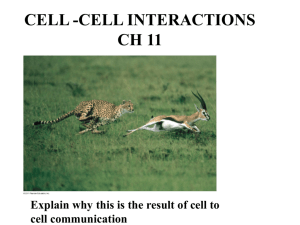
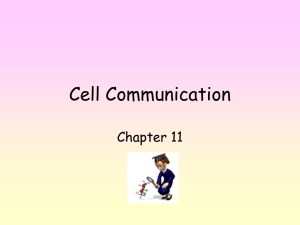
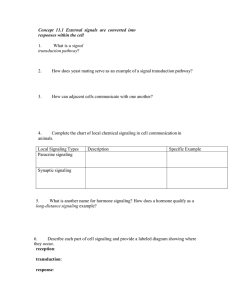
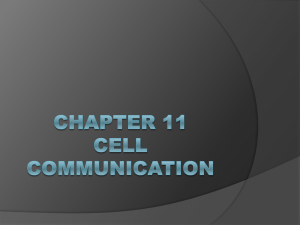

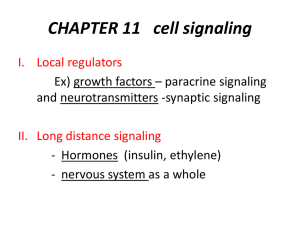
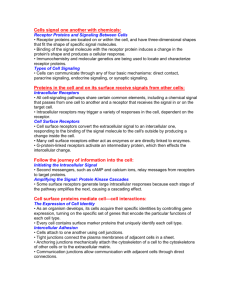
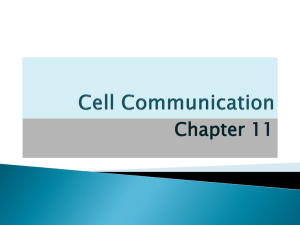
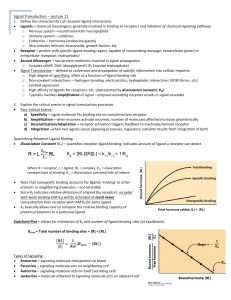
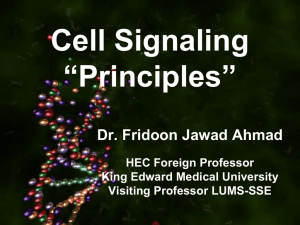
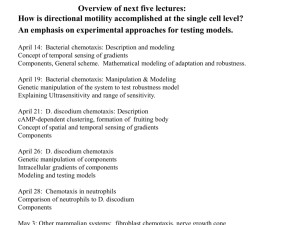
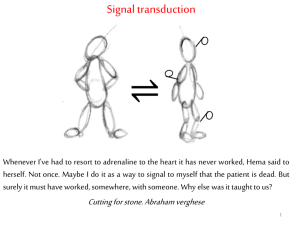
![[VII] Signal Transduction](http://s3.studylib.net/store/data/009518265_1-076eb31c6533001e61936fc64abe4da1-300x300.png)
